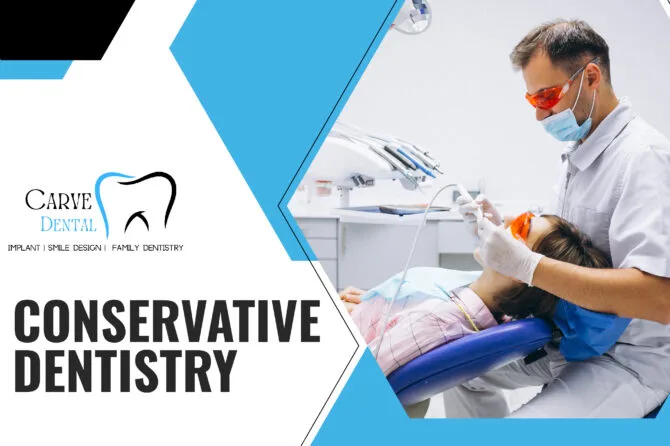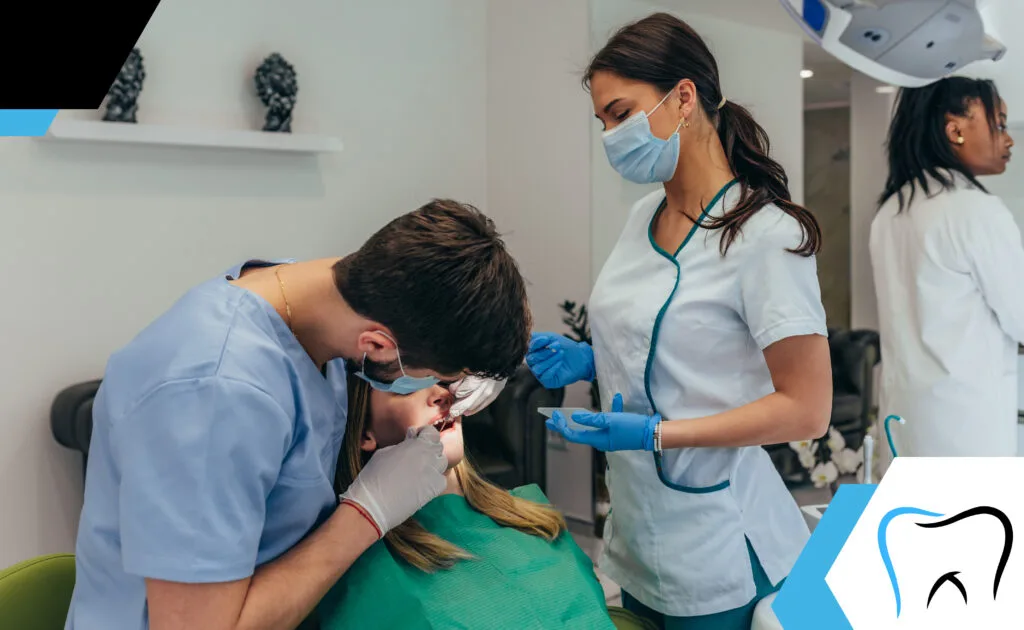
Conservative Dentistry
Maintaining optimal oral health is essential for a healthy smile and overall well-being. Conservative dentistry is an approach that focuses on preserving natural tooth structure and preventing dental problems through early detection, preventive measures, and minimally invasive treatments. In this blog, we will explore the principles and benefits of conservative dentistry in maintaining long-term oral health.
Keywords: conservative dentistry, oral health, preventive dentistry, early detection, minimally invasive treatments, dental check-ups, dental sealants, fluoride treatment, composite fillings, root canal therapy, periodontal maintenance
Conservative Dentistry: Understanding The Principles and Approach
Conservative dentistry is a philosophy that aims to conserve natural tooth structure and minimize the need for extensive dental treatments. The key principle is to preserve as much healthy tooth structure as possible while addressing oral health issues in the most effective and least invasive way. This approach focuses on preventive measures, early detection, and minimally invasive treatments, promoting long-term oral health.
Early Detection and Diagnosis: The Importance of Regular Dental Check-ups
Regular dental check-ups play a vital role in conservative dentistry. Dentists are trained to identify dental issues in their early stages, allowing for prompt intervention and prevention of further damage. Through routine examinations and diagnostic tools such as X-rays, dentists can detect cavities, gum disease, and other oral health problems before they become more severe and require extensive treatments.

Preventive Measures: Promoting Oral Health through Proper Oral Hygiene Practices
Prevention is a cornerstone of conservative dentistry. By promoting proper oral hygiene practices, such as regular brushing, flossing, and using mouthwash, individuals can significantly reduce the risk of dental problems. Maintaining a healthy oral hygiene routine helps remove plaque, the main culprit behind tooth decay and gum disease. Dentists also provide guidance on effective brushing techniques and personalized oral care recommendations.
Dental Sealants: Protecting Teeth from Decay and Cavities
Dental sealants are thin protective coatings applied to the chewing surfaces of the back teeth (molars and premolars). These sealants create a barrier that prevents food particles and bacteria from accumulating in the deep grooves and pits of the teeth, reducing the risk of decay and cavities. Dental sealants are particularly beneficial for children and teenagers, as their newly erupted permanent teeth are more susceptible to decay.
Fluoride Treatment: Strengthening Enamel and Preventing Tooth Decay
Fluoride is a mineral that helps strengthen tooth enamel and prevent tooth decay. In conservative dentistry, fluoride treatments are used as a preventive measure to protect teeth from cavities. Dentists can apply fluoride varnish or gel directly to the teeth during dental visits, or recommend fluoride toothpaste and mouthwash for daily use at home. Regular fluoride treatments provide an additional layer of defense against dental problems.

Minimally Invasive Treatments: Preserving Natural Tooth Structure in Restorative Procedures
Conservative dentistry emphasizes minimally invasive treatments whenever possible. This means preserving as much of the natural tooth structure as possible while restoring and repairing teeth. Minimally invasive techniques include removing only the decayed or damaged portion of the tooth, using tooth-colored materials for fillings, and preserving healthy tooth structure during restorative procedures.
Composite Fillings: Aesthetic and Functional Restoration of Cavities
Composite fillings, also known as tooth-colored fillings, are a popular choice in conservative dentistry. These fillings are made from a blend of resin materials that match the color of the natural teeth, providing a seamless and aesthetic restoration. Unlike traditional amalgam fillings, composite fillings require minimal removal of tooth structure and bond directly to the tooth, enhancing its strength and durability.
Also Read: How to get rid of crappy-sore itchiness?
Root Canal Therapy: Saving Infected Teeth and Avoiding Extractions
Root canal therapy is a dental procedure that aims to save infected teeth and prevent the need for extractions. When the pulp, which contains nerves and blood vessels, becomes infected or damaged, it can cause severe pain and jeopardies the health of the tooth. Root canal therapy involves removing the infected pulp, cleaning the root canals, and sealing them to prevent further infection. This procedure not only relieves pain but also allows the natural tooth to be preserved and function properly. Root canal therapy is an essential component of conservative dentistry, focusing on saving teeth and maintaining optimal oral health.
Leave a reply
Leave a reply